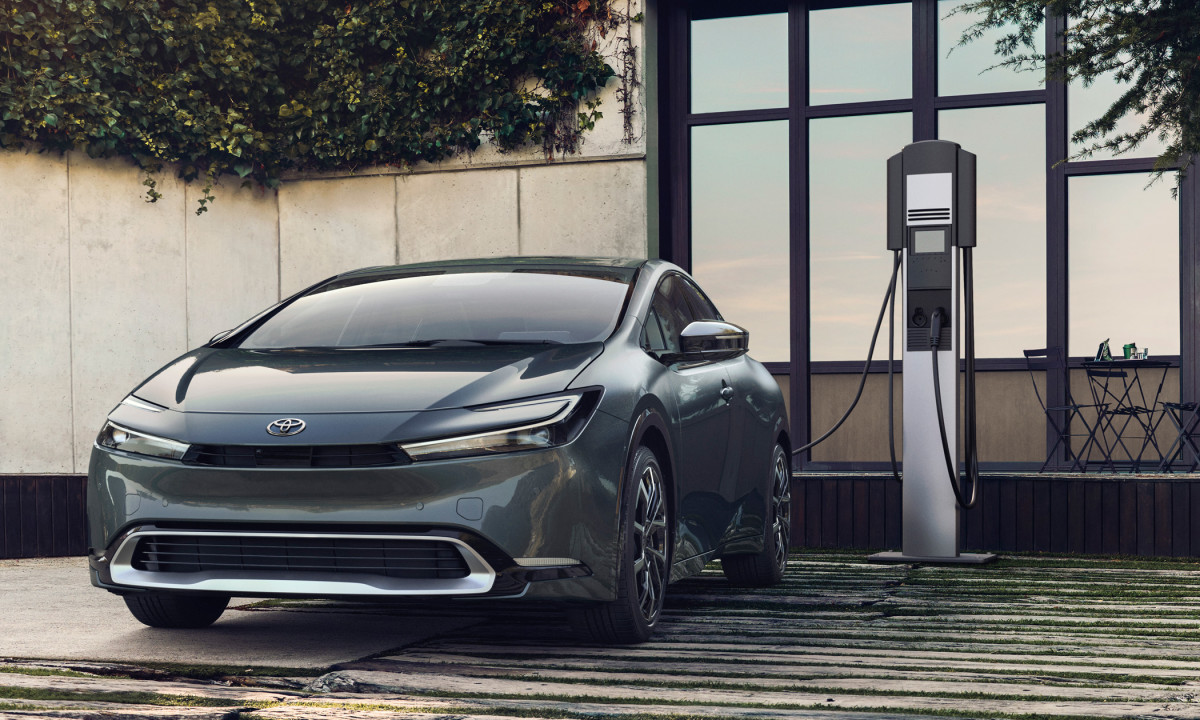
As fully electric vehicle sales start to slow, automakers view plug-in hybrids as a viable solution for electrification.
On paper, plug-ins sound like a great "middle of the road" alternative to EVs. They run on gas when you want them to and have batteries that can be charged like a traditional battery-electric car, which allows for fully electric driving.
💰💸Don't miss the move: Subscribe to TheStreet's free daily newsletter💸💰
Although most plug-in models do not have the equivalent electric range of battery-powered EVs like Tesla's, they are often seen as a solution for gas-free trips around town when their owners habitually charge their vehicles.
However, these models are much more expensive compared to traditional hybrids, and a new study from J.D. Power shows that they don’t quite match the ownership experience of an actual EV, leaving buyers puzzled and dissatisfied.

The plug-in hybrid consumer dilemma
Plug-in hybrids have been growing in availability as a segment, with 41 models available on the American auto market in August 2024, compared with 29 around the same time two years ago.
Manufacturers including Alfa Romeo, Bentley and Toyota offer plug-in hybrid models in a variety of shapes and sizes for different customers.
Compared to other segments, automakers offer more plug-in hybrid vehicles than traditional hybrids (39 different models on sale,) and are not far from the 60 different EVs on the market.
However, an abundance of vehicle variety does not equate to increased vehicle sales.
According to J.D. Power data, plug-in hybrids make up just 1.9% of total new vehicle sales through August 2024, compared with 9.4% for EVs and non-plug-in hybrids like the Toyota Prius accounting for a massive 10.7% market share.
Though plug-ins are seen as the "perfect formula" as an in-between for traditional gas cars and battery-electric vehicles, there are flaws that explain why these novel vehicles aren't catching on.
More Business of EVs:
- A ridiculous Tesla Supercharging flaw is making EV owners hostile
- Study: EV charging stations have a secret built-in business benefit
- Mercedes latest tech is ahead of Tesla in one key area
First, and probably the most obvious to value-conscious consumers, is the overall cost of buying plug-in hybrids compared to traditional hybrid cars and EVs.
According to data from J.D. Power, the average customer-facing transaction price for a plug-in hybrid in the compact SUV segment from January to August 2024 was $48,700. During the same time span, similar-sized cars were cheaper when bought as traditional hybrids and EVs, with average prices costing $37,700 and $36,900, respectively.
Additionally, buyers who shell out for plug-ins aren't very satisfied with them.
Through its U.S. Electric Vehicle Experience Ownership Study, J.D. Power found that out of a scale of 1,000 points, the overall customer satisfaction ratings for plug-ins was at 669 points, compared to 716 points for "mass-market EVs" and 738 points for "premium EVs."
“There’s been a lot of focus on creating intermediary steps for consumers who may not be ready to fully adopt a battery-electric vehicle yet,” J.D. Power’s EV practice executive director Brent Gruber told Automotive News. “Plug-in hybrids have their merits for certain people, but when you look at that ownership experience, it’s certainly not as positive as battery-electric vehicle ownership experiences.”
Part of this lack of satisfaction is the soul-crushing reality of the fact that plug-in hybrids contain not one, but two different powertrains that require maintenance. Many owners complained to J.D. Power about the unexpected and inflated ownership costs stemming from this design feature, as well as the hassle of having to refuel their plug-in hybrids with gasoline and charge up their batteries to get the best range.
Related: Auto industry push to plug-in hybrids has surprising outcome
Plug-in hybrids have their own flaws, too
To get the most range and fuel economy out of a plug-in hybrid, owners must keep their vehicles charged and fueled up in order not to rely heavily on its gasoline engine.
An investigation by InsideEVs in July found that automakers are keeping silent about how many plug-in hybrid owners actually plug in, which can allow them to treat plug-in hybrids more like a stopgap than leeway for meaningful progress.
The EPA's updated rules regarding EV adoption lower the threshold of EVs amongst total vehicle sales from 67% to 56% by 2032, but also allow automakers to comply by producing more gas-electric hybrids and plug-in hybrids. This can increase the average-per-mile carbon emissions of light-duty vehicles by 14% between 2027 and 2032 compared to the original proposal, Reuters reported.
Additionally, since plug-in hybrids are equipped with the same kind of batteries as EVs, they suffer from the same scary problems associated with EVs.
Recently, Stellantis issued a recall of 194,000 units of the Jeep Wrangler and Grand Cherokee 4xe plug-in hybrids, which it attributed to 13 fires that occurred when the vehicles were turned off.
Related: Veteran fund manager sees world of pain coming for stocks







